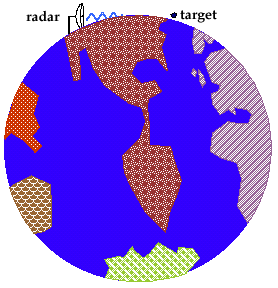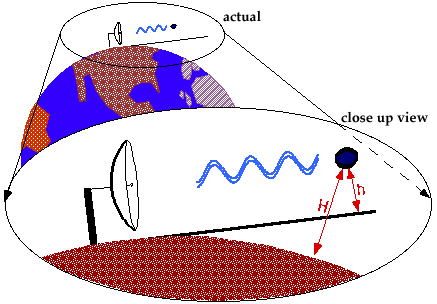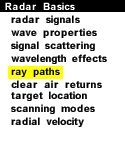
|
One must account for the curvature of the earth when determining the altitude of a target. Distant targets, which are close to the ground, cannot be seen by a radar because they will be below the horizon.

The height of a distant target that is above the horizon will be underestimated if the curvature of the earth is not taken into account. For example, the height of the target on the figure below would be underestimated as "h" rather than the actual height "H".

A second effect, called refraction, also affects
the path the electromagnetic energy will take as it propagates through
the atmosphere. Normally, because the atmosphere's density decreases rapidly
with height, the radar beam will be deflected downward, much like
light
passing through a
glass prism.
In extreme cases, where temperature increases
with height and dry air overlays warm air, (a condition often found along
coastlines), the beam can bend down dramatically and even strike the ground.
Meteorologists call this effect "anamolous propagation". Both the
curvature of the earth and normal atmospheric refraction must be accounted for
when determining the position of a target.

wavelength effects |
|

clear air returns |




